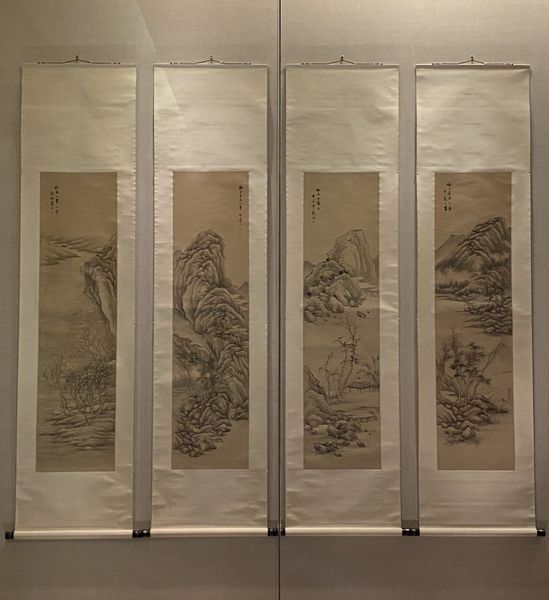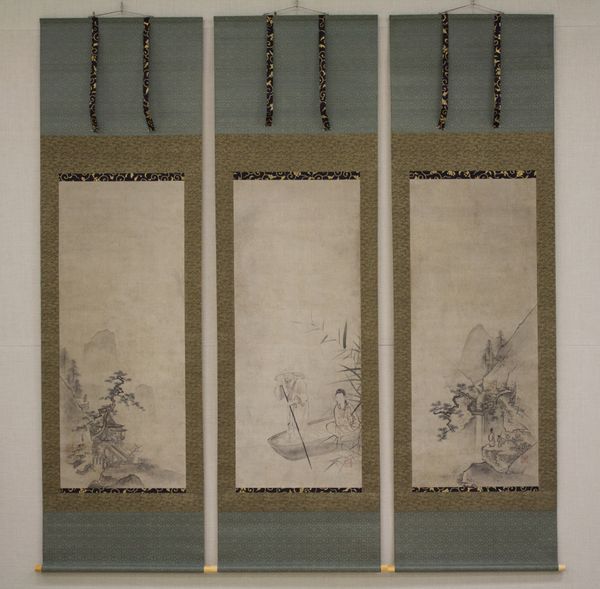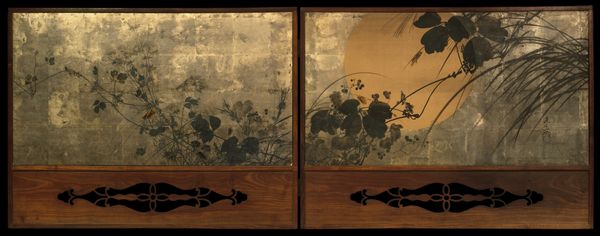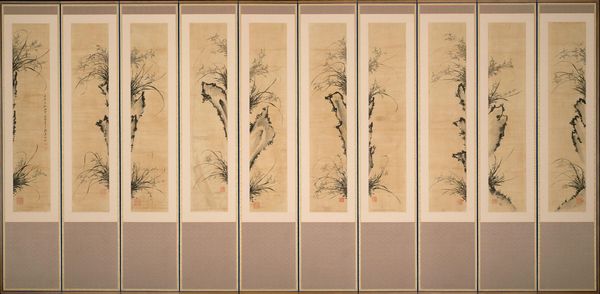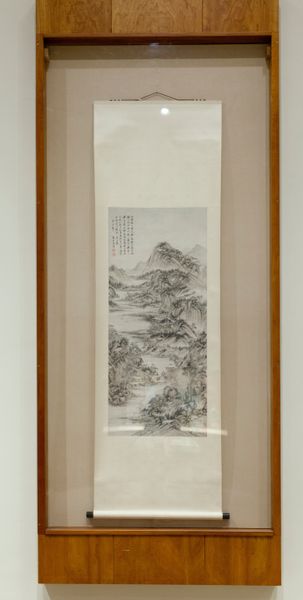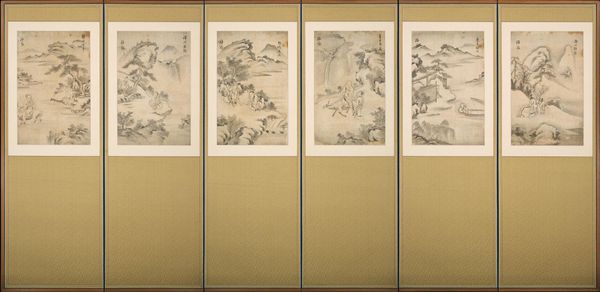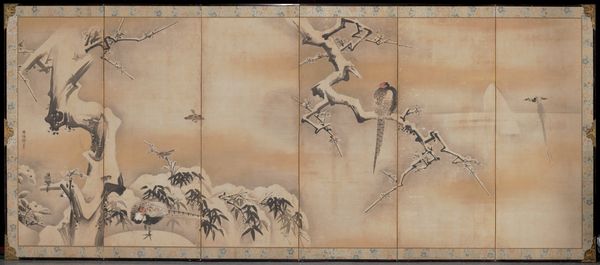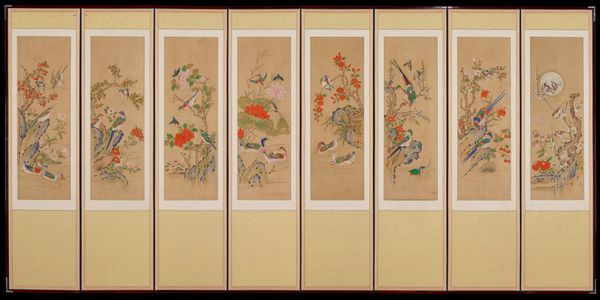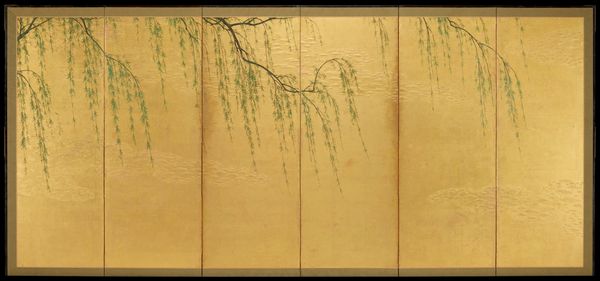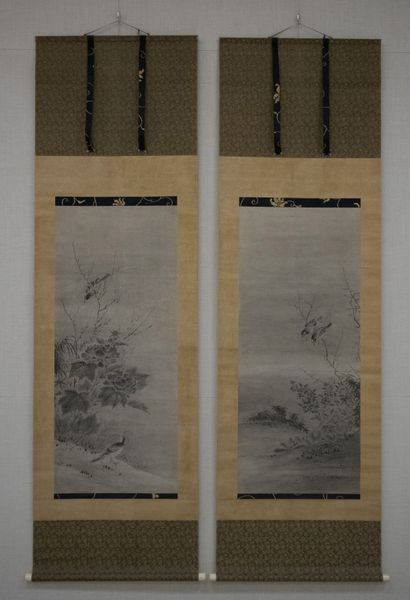
Monkey Trainers and Scenes of Chinese Life c. 17th century
0:00
0:00
paper
#
asian-art
#
landscape
#
figuration
#
paper
#
genre-painting
#
watercolor
Dimensions: Painting: 170.4 × 372.0 cm Framed: 156.0 × 358.0 cm
Copyright: Public Domain
Editor: We’re looking at "Monkey Trainers and Scenes of Chinese Life," a 17th-century work on paper by Kano Yasunobu. It's quite fascinating – these unfolding panels depict these miniature figures inhabiting detailed landscapes. What interpretations can we draw from this? Curator: The scenes immediately suggest an engagement with social dynamics. While seemingly picturesque, these scenes invite us to consider issues of class, labor, and the representation of everyday life in 17th-century China and Japan. Who holds power in these interactions, and how are those relationships reflected visually? Editor: I see the figures training monkeys. Is there a commentary on the relationship between humans and animals, or perhaps something more metaphorical about control? Curator: Exactly! Think about the period, the rise of certain social hierarchies. Monkey training, seemingly innocent, can be seen as a lens to examine broader societal control. What are the implications of depicting humans exercising dominion over other beings? And who gets to tell this story? What purpose might these screens serve, who might see these images, and what statements do these scenes make, intentionally or unintentionally, to the world about society's order and morality at the time? Editor: That's insightful! So, by looking at a simple genre scene, we’re actually uncovering complex social narratives. It shifts the focus from a purely aesthetic appreciation to a more critical reading. Curator: Precisely! It is this weaving of art and social critique that allows the viewers to understand the layers of power structures within the society. It requires us to challenge the established ways of interpreting history and art. Editor: This perspective gives me a lot to consider. It highlights the power of art as a mirror to, and critique of, its own time. Curator: Indeed, art allows a space where conventional narratives are contested.
Comments
No comments
Be the first to comment and join the conversation on the ultimate creative platform.

